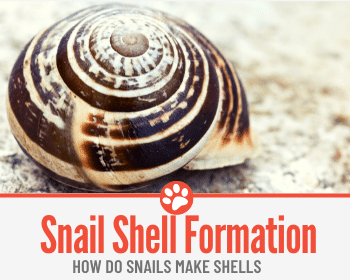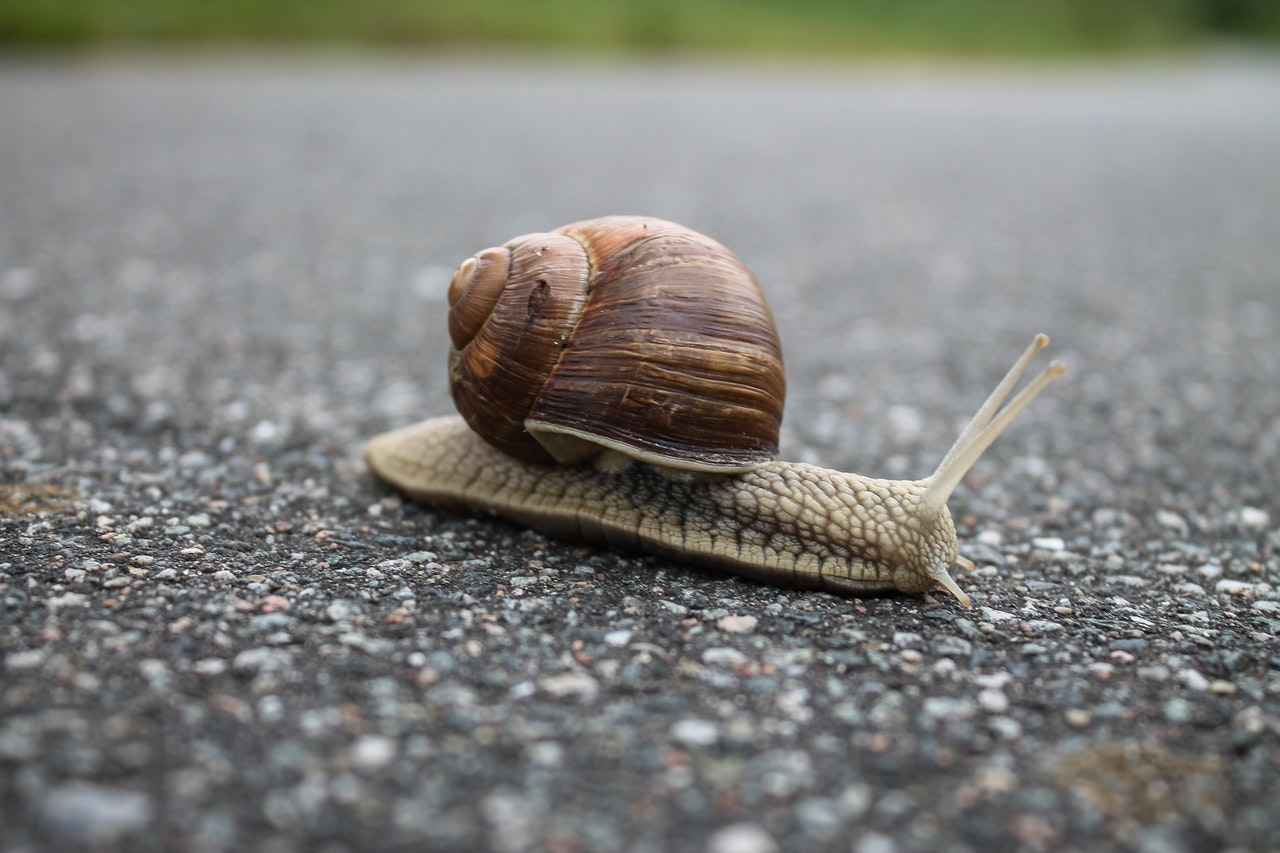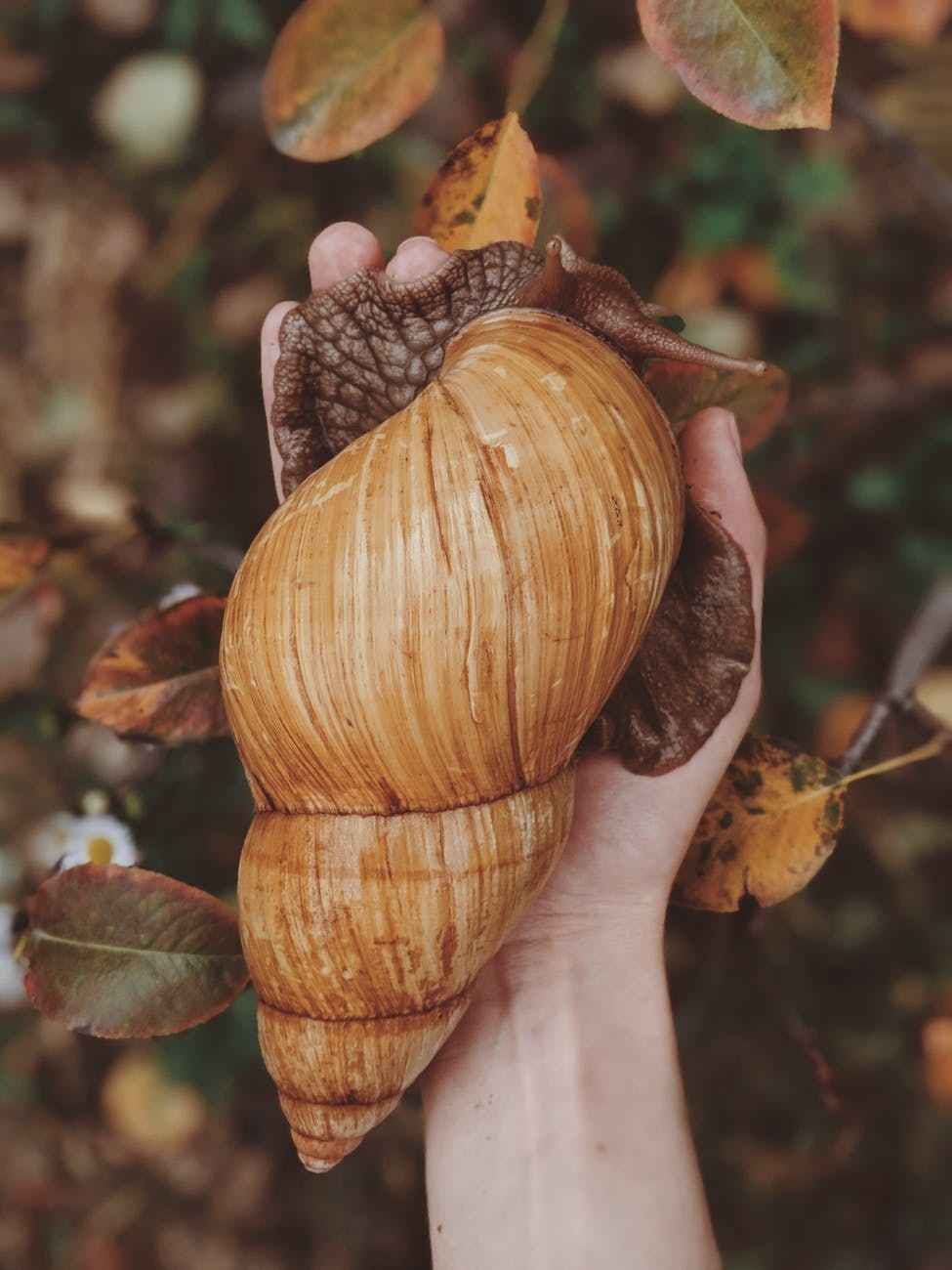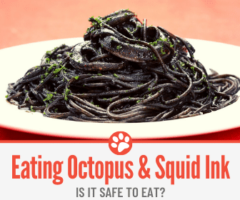 I was doing a bit of gardening recently when I came across a snail with a chunk of its shell missing.
I was doing a bit of gardening recently when I came across a snail with a chunk of its shell missing.
I thought to myself, how do these shells work? I wonder if the little guy can grow another one…?
I did some further digging, excuse the pun, and this is what I uncovered!
How Do Snails Make Shells?
Snails make their shells with a gland called the ‘mucous pedal gland’. The function of this gland is to produce a calcium rich mucous which the snail spreads on the outer rim of the original shell.
Over time this mucous hardens, at first forming a weak, soft edge that eventually becomes hard like the rest. This process is repeated as necessary to ensure the shell grows along with the snail.
Land, garden and sea snails all follow the same shell growth process.
Through my research I also discovered that there are over forty thousand species of snail and some of them only live in water. Can you imagine that?
! I also discovered just how important a role the shells play in the life of a snail and how some of their reproductive methods are totally crazy. Check this out!
Do snails have shells when they are born
All snails are born with a basic soft shell called a ‘protoconch’. The shells are made of calcium carbonate, which is a chemical compound of calcium and protein also found in rocks, seashells and even dark green vegetables.
Where Do Snail Shells come from & How are Snail Shells Formed
As a snail reaches maturity, their original shell becomes the smallest part of the spiral we see in all snail shells. As the shell grows, it is pushed around the snail like an unwinding spring, this is the reason for the spiral shape. Because of the way the snail forms it’s shell it is also capable of repairing it, the mucous excretion acting like glue to seal a wound – so I’m sure my little garden friend will be fine.
Now, given that the shell is made of calcium carbonate, you might have guessed that the main ingredient for the shell is calcium – this means that to grow a shell effectively, snails must consume large quantities of it to fuel their mucous production.
All snails hatch from calcium dense eggs and instinct tells them to eat the eggshell after they hatch. This sets them on the path of seeking out calcium – from birth they hunt for anything and everything plant based containing this essential dietary ingredient (snails are omnivores with very few genetically exceptional species that may occasionally eat fish or other snails).
Land snails often look for green vegetables such as spinach and broccoli. Snails that spend their lives in the water have a diet primarily consisting of plants like algae and kelp.
Diet has a large impact on the pattern of the shell too! Snails with a diverse diet tend to have more vibrant and interesting patterned shell, which is why sea snails living in warmer climates tend to be the most eye-catching, due to the larger variety of available foods.

Why do snails have a shell?
The purpose of a snail’s shell is very diverse and it’s kind of like a little snail house, though it’s technically a living part of the snail.
Because of the genetic make-up of a snail, like all members of the gastropod family, their entire body is very moist – maintained by their mucous production mentioned earlier – as such, they require a moist environment to survive.
This is why we rarely see snails on the sidewalk when it’s sunny and dry, it makes it very difficult and uncomfortable for the snail to move around as it has to produce far more mucous to do so.
If it’s really hot, then the shell acts as a very necessary sun shield where the snail can retreat into and stay nice and wet.
Shells are also very useful as a means of defence against predators such as birds and fish – the strong shell being virtually impenetrable to many species.
They can also hide well as their shells often camouflage well with the environment in which they get their food from – as I mentioned earlier, the shell pattern and colour changes based on diet.
If a snail feels threatened it can retract its entire body into the shell so that only very persistent and well-equipped predators can get at them. Birds like the song thrush will clasp a snail in its strong beak and repeatedly smash it against a solid object until they successfully break the hard shell.
Other large predators such as blue jays, ravens, hawks and owls will actually swallow smaller snails whole, in which case the shells are likely only to cause a minor stomach upset for their attackers…hardly a fair trade!
How are snails attached to their shells?
While we might look at the shell as the snail’s home, it is attached from birth and cannot be removed. The shell should be considered as an extension of the snail itself, like a human’s ribcage.
Can a snail live without its shell or Do Snails Die when their Shells Break?
The short answer is, sadly, no. So, if my little friend’s shell was more severely damaged, he probably wouldn’t have made it.
Imagine if your rib cage was on the outside of your body. Our ribcage is very important for our survival as it protects our important bits!
Without our ribcage we couldn’t survive as it supports our ability to breathe and it is the same for the snail.
Not only does the snail breathe through a breathing hole in its shell, it simply wouldn’t survive the elements without it. Who would have known that a snail’s greatest defence mechanism is also one of its most vital organs!
Can snails regrow their shells?
As mentioned earlier, a snail can make minor repairs to their shell as needed, however, to regrow the entire shell would sadly be impossible because to lose the shell means death.
Where do snails come from? Reproduction and more!
One of the most interesting finds I came across in my search for snail information is that the majority of snails don’t reproduce like humans, or many other mammals at that. In fact, their reproduction methods are incredibly rare in the sense that most snails are hermaphrodites.
This means that the snail is both male and female – possessing all necessary elements required to produce both egg and sperm. This means that a snail can reproduce all by itself, isn’t that crazy?!
While it is possible for snails to reproduce by themselves, they generally prefer to find a mate, because the chance of survival for a baby snail that is self-fertilised is much lower than if they produce with a sexual partner.
One of the most fascinating discoveries I came across is that some species of snail use a mechanism commonly called a ‘love dart’. Love darts are made up of calcium and contain hormones that help to enhance reproductive capability of the party that is ‘shot’ with the dart.
Love darts are typically present in snails who have been sexually mature for a while and reproduced in the past. In the final stages of reproduction snails will shoot these love darts into their sexual partners as a part of the mating ritual.
The only problem is that sometimes these darts that are designed to help with successful reproduction, actually have the potential to pass right through the snail on impact and damage vital organs!
It’s a good thing these snails don’t have thought processes like human beings – they are very instinct oriented beings. Otherwise these particular species would probably die out from fear of reproducing!
Save the snail shell!
What a journey that was – I hope you enjoyed learning about snails as much as I did! Remember that all snails are born with their shell and that it is vital for their survival.
So, if you’re ever in the garden and you see a snail with a cracked shell, you can help the snail by moving it out of the sun so that it doesn’t dry out while it’s repairing itself.
Some people have been recorded to use glue or sticky tape successfully to help fix snail shells, but that might be a level of commitment you’re not looking for with your little garden friends. (Or pests, depending on who you ask!)







